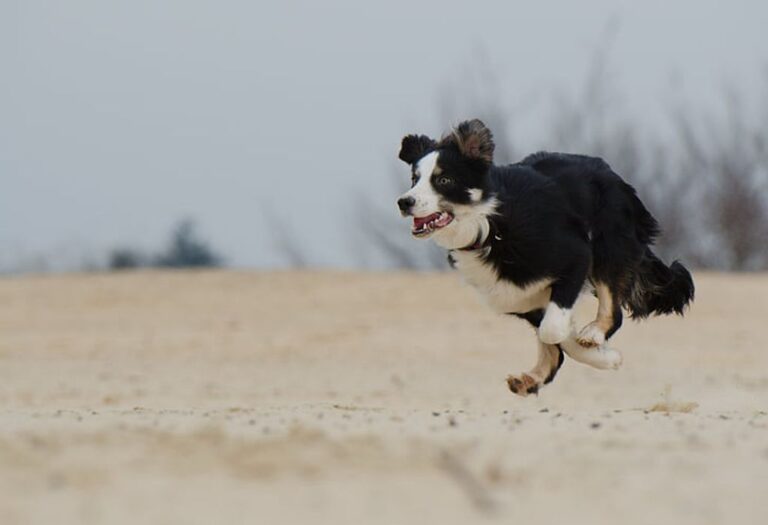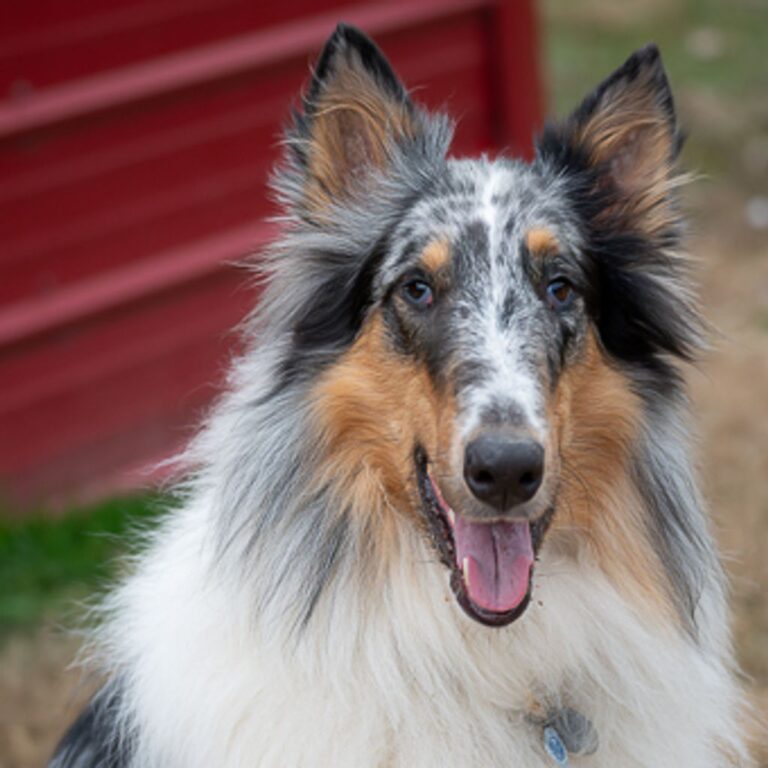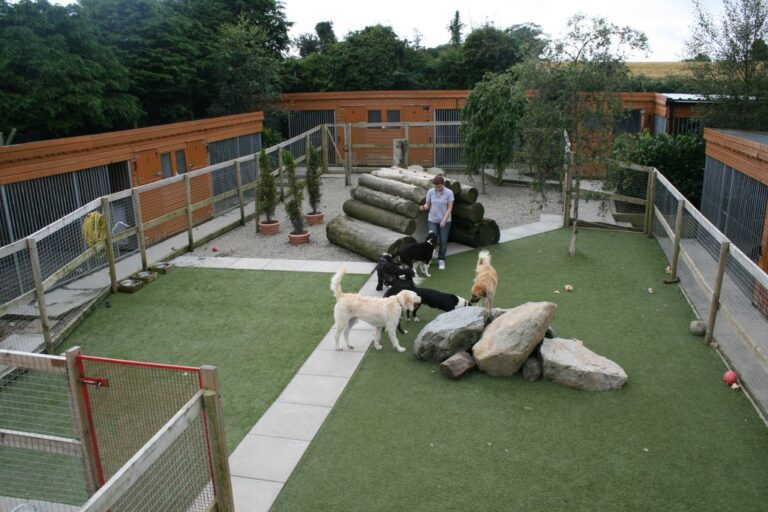Effective Strategies for Dealing with Aggressive Dog Behavior
Dealing with aggressive dog behavior can be challenging and potentially dangerous. It is important to understand the underlying causes of aggression in dogs and recognize the signs of aggression. Preventing aggressive behavior through proper socialization, training, and creating a safe environment is crucial. However, if your dog already displays aggressive behavior, using positive reinforcement techniques, seeking professional help, and implementing behavior modification strategies can be effective. Additionally, understanding dog body language, using protective equipment, and managing interactions with other dogs and people are important safety measures. Here are the key takeaways from this article:
Key Takeaways
- Understand the common causes of aggression in dogs.
- Recognize the signs of aggression in dogs.
- Properly socialize and train your dog to prevent aggressive behavior.
- Create a safe and positive environment for your dog.
- Use positive reinforcement techniques to encourage non-aggressive behavior.
Understanding Aggressive Dog Behavior

Common Causes of Aggression in Dogs
Dogs can exhibit aggressive behavior for various reasons, including fear, possessiveness, and a lack of socialization. Younger dogs may display aggression as part of their development, while older dogs might exhibit aggression due to increased vulnerability. Likewise, sex can be a factor; unneutered males are often more prone to aggressive displays. Medical conditions can also contribute to aggressive behavior. Hypothyroidism, for example, can lead to erratic behavior, including aggression. Pain-elicited aggression is common; a dog in discomfort may react aggressively when touched or approached. Thorough veterinary evaluation is essential to rule out or confirm medical causes of sudden aggression.
Recognizing Signs of Aggression
When it comes to dealing with aggressive dogs, it’s crucial to be able to recognize the signs of aggression. Aggression in dogs can manifest in various forms, from growling and snapping to biting. It’s important to understand that aggression can stem from the need to protect territory, assert dominance, or as a fear response. Levels of aggression can escalate from mere posturing to serious, harmful attacks.
Here are some common signs that may indicate your dog is in an aggressive state:
- Muzzle punching
- Irritability
- High arousal
- Snapping
- Rigid or still stance
It’s essential to pay attention to these signs and take appropriate action to prevent any escalation. Early recognition of these signs is critical in ensuring the safety of everyone involved.
Remember, aggression in dogs can have different triggers and warning signs. It’s important to consider the specific breed and environment your dog is in. By understanding the nature of aggression and recognizing its triggers, you can effectively address and manage aggressive behavior in your dog.
Types of Aggressive Behavior in Dogs
There are seven different types of aggression in dogs, including fear aggression, territorial aggression, idiopathic aggression, predatory aggression, intra-household aggression, control aggression, and resource guarding/possession aggression. Each type of aggression has its own characteristics and triggers. It’s important to understand these types of aggression in order to effectively address and manage aggressive behavior in dogs.
Preventing Aggressive Behavior in Dogs

Proper Socialization and Training
Owners should ensure the environment does not contain stimuli that might trigger their dog’s aggressive behavior. Removing toys, food bowls, and other animals can help maintain the dog’s focus during training sessions. The Importance of Safety for Handlers and Bystanders Safety for everyone involved is critical during aggressive dog training. Handlers should wear protective gear when necessary and maintain a barrier between the dog and bystanders. Clear communication and signs informing others of the training in progress are measures that can greatly enhance safety for all humans present.
Creating a Safe and Positive Environment
A safe training environment is crucial for dealing with aggressive dog behavior. It is important to create a safe haven for the dog, which can reduce anxiety and prevent aggressive outbursts. A crate should never be used as punishment but as a peaceful space for the dog.
Developing a routine is essential for obedience training success. Training sessions should be regular but not overly long to avoid frustration. They must include:
- Daily practice sessions: 5-10 minutes, twice a day.
- Positive reinforcement: Rewards for good behavior, such as treats or praise, to encourage learning.
- Gradual progression: Start with easy tasks and slowly introduce more complex challenges.
A safe training environment is paramount. This involves using muzzles and leashes appropriately, assessing the training area to eliminate distractions, and ensuring the safety of handlers and bystanders.
Muzzles are essential tools for preventing bites, while leashes provide control during training. When selecting a muzzle, choose one that allows the dog to breathe and pant comfortably. Leashes should be sturdy and keep the dog at an appropriate distance from the handler.
An effective training space is free from distractions that could provoke aggression. Owners should ensure the environment does not contain stimuli that might trigger their dog’s aggressive behavior. Removing toys, food bowls, and other animals can help maintain the dog’s focus during training sessions.
Safety for everyone involved is critical during aggressive dog training. Handlers should wear protective gear when necessary and maintain a barrier between the dog and bystanders. Clear communication and signs informing others of the training in progress are measures that can greatly enhance safety for all humans present.
To effectively train an aggressive dog, owners must establish a secure environment that protects all parties involved during the training process. The safety of humans and other animals should always be a priority. Using positive reinforcement and behavioral modification techniques can help reshape negative behaviors into more sociable and acceptable ones. In some cases, soliciting the help of a professional who specializes in aggressive dog behavior may be necessary.
Managing Triggers and Stressors
When it comes to dealing with triggers and stressors that may cause your dog to become aggressive, it’s important to have a plan in place. There will be situations where you cannot avoid potential triggers, such as encountering unfamiliar people or dogs. In these situations, maintaining a safe distance and using management techniques like redirection and focus exercises can help keep your dog calm and prevent aggressive reactions. Consistency is key when gradually desensitizing your dog to these triggers. It requires time, patience, and treats to help them associate positive experiences with previously anxiety-inducing stimuli. Establishing clear boundaries and enforcing them consistently is also crucial in managing aggression. Everyone in the household should understand and enforce the same rules, providing structure for your dog to understand what behaviors are unacceptable.
Dealing with Aggressive Behavior in Dogs

Using Positive Reinforcement Techniques
Positive reinforcement and reward-based training are fundamental strategies that encourage a dog’s good behavior by offering them something enjoyable immediately after they behave appropriately. This can include treats, praise, or playtime. Training aggressive dogs often starts with basic commands like sit, stay, and come, rewarding them consistently to reinforce those positive behaviors. Understanding and Redirecting Predatory Aggression Dogs with predatory aggression can be trained to redirect their focus away from
Seeking Professional Help
When it comes to dealing with aggressive dog behavior, sometimes it’s best to seek professional help. Professional intervention can provide tailored solutions and strategies for behavior modification. If you notice signs of aggression in your dog, such as growling, rigid posture, or showing teeth, it’s important to act promptly. Seeking help from a qualified behaviorist or trainer can make a big difference in addressing the issue effectively. They have the skills and experience to work with aggressive dogs and can offer personalized training programs. Their expertise allows them to create safe, controlled training environments where they can incrementally address the aggression and work towards behavior change. Don’t wait until the situation escalates. Prevent another incident by avoiding the triggers that caused the aggressive behavior. Remember, seeking professional help is not a sign of failure, but rather a proactive step towards ensuring the safety and well-being of both you and your dog.
Implementing Behavior Modification Strategies
Behavioral modification techniques can help reshape negative behaviors into more sociable and acceptable ones. In some cases, soliciting the help of a professional who specializes in aggressive dog behavior is essential to ensure the training is conducted safely and effectively. Training an aggressive dog requires recognizing and understanding the signs of aggression. Safety and the well-being of all individuals are paramount when training. Professional guidance may be necessary for effective behavior modification.
Safety Measures for Dealing with Aggressive Dogs

Understanding Dog Body Language
When it comes to dealing with aggressive dog behavior, paying attention to your dog’s body language is crucial. By observing their behavior closely, you can spot warning signs before the situation escalates. These signs may include becoming still and rigid, tail between legs, ears pinned back, and aggressive eye contact. It’s important to note that dog breeder selection plays a significant role in a dog’s behavior. Understanding your dog’s body language can help you identify potential triggers and prevent violent outbursts. Here are some tips to help you understand your dog’s body language:
- Observe their posture and facial expressions
- Pay attention to their tail position
- Notice any changes in their vocalizations
- Look for signs of stress or anxiety
Remember, being aware of your dog’s body language can help you create a safe and positive environment for them.
Using Protective Equipment
A safe training environment is paramount. This involves using muzzles and leashes appropriately, assessing the training area to eliminate distractions, and ensuring the safety of handlers and bystanders.
Muzzles are essential tools for preventing bites, while leashes provide control during training. When selecting a muzzle, choose one that allows the dog to breathe and pant comfortably. Leashes should be sturdy and keep the dog at an appropriate distance from the handler.
An effective training space is free from distractions that could provoke aggression. Owners should ensure the environment does not contain stimuli that might trigger their dog’s aggressive behavior. Removing toys, food bowls, and other animals can help maintain the dog’s focus during training sessions.
Safety for everyone involved is critical during aggressive dog training. Handlers should wear protective gear when necessary and maintain a barrier between the dog and bystanders. Clear communication and signs informing others of the training in progress are measures that can greatly enhance safety for all humans present.
Managing Interactions with Other Dogs and People
When it comes to managing interactions with other dogs and people, there are a few important things to keep in mind. First, it’s crucial to socialize your dog and teach them that people are not a threat. Enrolling them in classes and having friends and neighbors stop by with treats can help your dog associate positive experiences with new people. Additionally, it’s important to handle unavoidable situations with a plan in place. Maintaining a safe distance, employing management techniques like redirection and focus exercises, and gradually desensitizing your dog to unfamiliar people and dogs are effective strategies. Consistency is key in reinforcing positive behavior and preventing the reinforcement of aggressive behavior. Finally, ensuring a safe environment by removing triggers and using protective gear can greatly enhance safety for everyone involved.
Conclusion
Dealing with aggressive dog behavior requires a safe and effective approach. By using positive reinforcement, desensitization techniques, and seeking professional help, owners can address and mitigate aggressive behaviors. It is important to avoid punishment and focus on rewarding good behavior. Creating a well-structured training plan and ensuring the safety of all parties involved are essential. With patience and consistency, aggressive dogs can learn to behave more appropriately and improve their social behaviors. Remember, each dog is unique, and it may take time to see progress. But with dedication and the right strategies, you can create a safer and happier environment for both you and your furry friend.
Frequently Asked Questions
What are the common causes of aggressive behavior in dogs?
Common causes of aggressive behavior in dogs can include fear, territoriality, resource guarding, lack of socialization, past trauma, and genetic predisposition.
How can I recognize signs of aggression in my dog?
Signs of aggression in dogs can include growling, barking, lunging, snarling, snapping, biting, raised fur, stiff body posture, and intense staring.
What are the different types of aggressive behavior in dogs?
Different types of aggressive behavior in dogs can include fear aggression, territorial aggression, possessive aggression, redirected aggression, and predatory aggression.
How can I prevent aggressive behavior in my dog?
To prevent aggressive behavior in dogs, it is important to provide proper socialization and training, create a safe and positive environment, and manage triggers and stressors.
What are some positive reinforcement techniques I can use to deal with aggressive behavior in my dog?
Positive reinforcement techniques for dealing with aggressive behavior in dogs include rewarding calm and non-aggressive behavior, using desensitization techniques, and implementing behavior modification strategies.
When should I seek professional help for my dog’s aggressive behavior?
It is recommended to seek professional help for your dog’s aggressive behavior if the behavior is severe, persistent, or poses a danger to others. A qualified animal behaviorist or professional dog trainer can provide guidance and develop a personalized training program.







One Comment